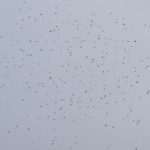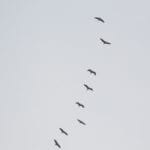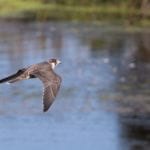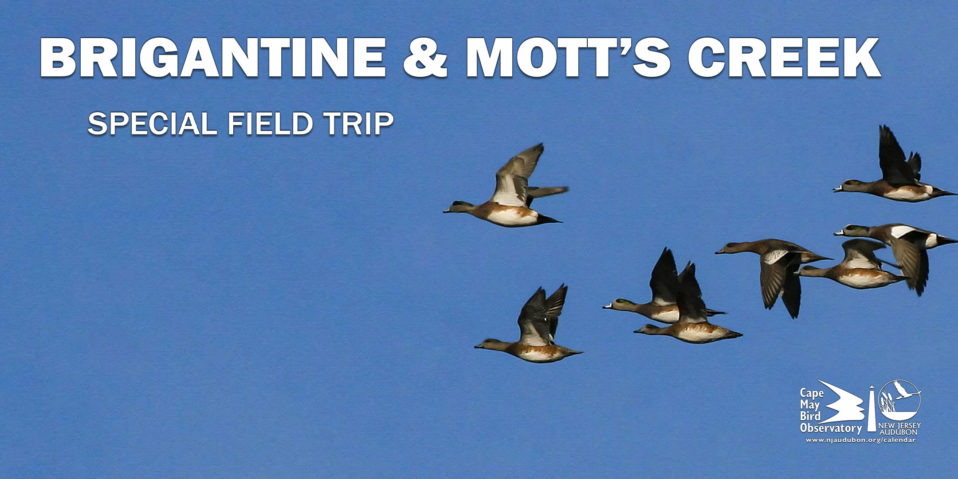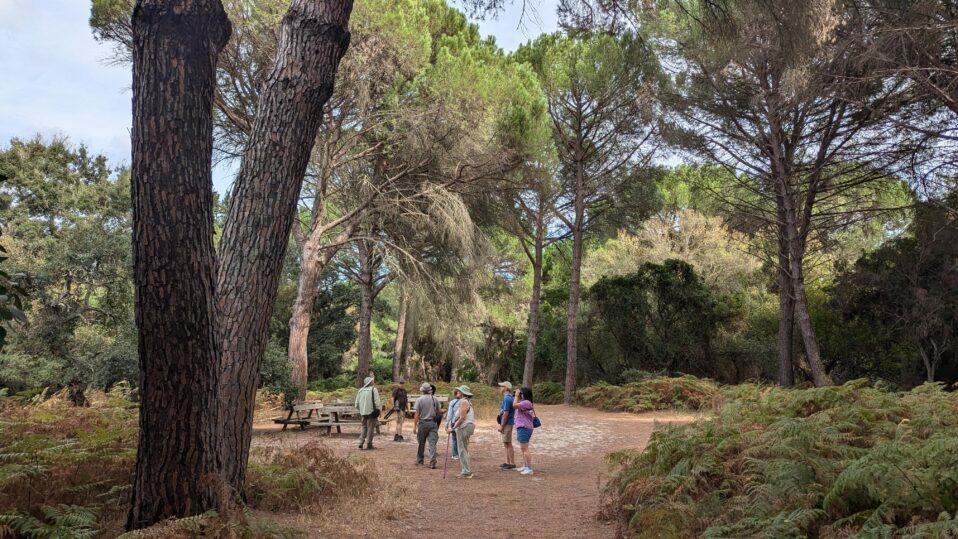 As I mowed the lawn in my front yard a commotion of chirps and squawks filled the air above me as I passed under a “snag” tree that I had purposely left standing upon the tree’s demise. As I stared up the trunk, scanning each hole and crevice for movement that would identify the producer of the loud vocalizations, two small feathery heads with long pointed beaks popped out of one of the cavities and looked down at me. “Pileated Woodpecker chicks!” I excitedly exclaimed, recognizing the white and black facial coloration, red cap and large size. With that, the adult Pileated flew in to be greeted by the two young chicks with a resounding series of calls of “feed me’’” from the hollow of the snag!
As I mowed the lawn in my front yard a commotion of chirps and squawks filled the air above me as I passed under a “snag” tree that I had purposely left standing upon the tree’s demise. As I stared up the trunk, scanning each hole and crevice for movement that would identify the producer of the loud vocalizations, two small feathery heads with long pointed beaks popped out of one of the cavities and looked down at me. “Pileated Woodpecker chicks!” I excitedly exclaimed, recognizing the white and black facial coloration, red cap and large size. With that, the adult Pileated flew in to be greeted by the two young chicks with a resounding series of calls of “feed me’’” from the hollow of the snag!
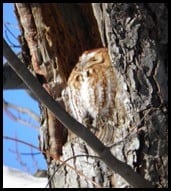 The world-renowned forest ecologist Dr. Jerry Franklin, says: “A dead tree is more alive than a live tree.” Alive with wildlife that is!! In North American over 85 species of birds, 35 of which occur in the Northeast, use cavities in snags. Additionally, snags also provide essential habitat for other species including insects, amphibians, reptiles and mammals.
The world-renowned forest ecologist Dr. Jerry Franklin, says: “A dead tree is more alive than a live tree.” Alive with wildlife that is!! In North American over 85 species of birds, 35 of which occur in the Northeast, use cavities in snags. Additionally, snags also provide essential habitat for other species including insects, amphibians, reptiles and mammals.
A snag tree (or cavity tree or wildlife tree), is a standing dead or dying tree, that typically exhibits leafless branches, loose bark, or exposed sapwood and rot. Snags typically develop “cavities” either naturally or cavities are by wildlife. Specifically, snags often attract insects to the decaying wood, thus also attracting other wildlife (including woodpeckers) to forage on the insects and ultimately create excavation holes that can be used by them or other species for nesting, shelter, roosting, perches and forage storage areas (i.e. caches).
According to the US Fish and Wildlife Service “The best snags for cavity-nesters are those with hard sapwood (between bark) and decayed heartwood (inner core) making them hard on the outside and soft in the middle. The hard sapwood provides protection from predators and insulation against weather, while the softened heartwood allows easy excavation deep into the snag. Many birds avoid very soft snags for nesting because extremely soft wood can be wet or crumbly.” Some ways to recognize a tree that is on its way to becoming a snag include: sap runs, dead main limbs, excessive fungi on the bark, splits in the trunk, large fissures or hollows, and large areas of decaying bark. All trees of all sizes in forests of various age-classes can be potential snags and each tree species and the location of the snag in the landscape will have different uses for different wildlife. But generally, the value of a snag tree increases as its size increases. Snags that are around shorelines or even in water features, (i.e. lakes, ponds streams, rivers), add important woody debris to aquatic habitat as well as provide unobstructed views for perching and foraging .
Snags are an important natural habitat component to wildlife and can be a “one-stop” shop for the survival of certain species. A snag tree can remain standing in place for many years and although snags have many wildlife benefits, it is important to consider the location of a snag when considering leaving it where it is standing. As the snag tree decays it could pose a hazard to life and property if it fell. Snags should not be retained in high activity public places.
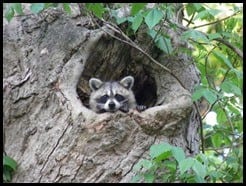 Through forest stewardship planning and implementation, snags/den trees, and other coarse woody debris for wildlife habitat can be incorporated into forest property management. As part of the Delaware River Watershed Initiative (DRWI), and through funding from the William Penn Foundationand the National Fish and Wildlife Foundation, NJ Audubon is seeking out landowners and farmers in the Highlands Region and the Kirkwood-Cohansey Aquifer Region (especially along the Delaware Bayshore) of the State for enrollment into the various federal conservation cost share programs for forest stewardship, as well as farmland, conservation practices. These conservation practices when implemented can help provide critical habitat for wildlife, as well as, contribute to improving water quality in the region. Additionally, depending on your property’s location within those regions, you may be eligible for additional funding or free restoration related materials, especially for riparian and wetland restorations. For more information on the NJ Audubon Delaware River Watershed Initiative related funding opportunities contact John Parke ([email protected]) for the Highlands Region and Kristen Meistrell ( [email protected]) in the Kirkwood-Cohansey Aquifer Region (southern NJ).
Through forest stewardship planning and implementation, snags/den trees, and other coarse woody debris for wildlife habitat can be incorporated into forest property management. As part of the Delaware River Watershed Initiative (DRWI), and through funding from the William Penn Foundationand the National Fish and Wildlife Foundation, NJ Audubon is seeking out landowners and farmers in the Highlands Region and the Kirkwood-Cohansey Aquifer Region (especially along the Delaware Bayshore) of the State for enrollment into the various federal conservation cost share programs for forest stewardship, as well as farmland, conservation practices. These conservation practices when implemented can help provide critical habitat for wildlife, as well as, contribute to improving water quality in the region. Additionally, depending on your property’s location within those regions, you may be eligible for additional funding or free restoration related materials, especially for riparian and wetland restorations. For more information on the NJ Audubon Delaware River Watershed Initiative related funding opportunities contact John Parke ([email protected]) for the Highlands Region and Kristen Meistrell ( [email protected]) in the Kirkwood-Cohansey Aquifer Region (southern NJ).
All photos by John Parke
References
DeGraaf, R. 1978. New life from dead trees. Natl. Wild. 16(4):28-31
Scott, V. E., K. E. Evans, D. R. Patton and C. P. Stone. 1977. Cavity-nesting birds of North American forest. U.S. Dept. of Agriculture., Forest Service. Agric. Handbook No. 553. 510 pp.




